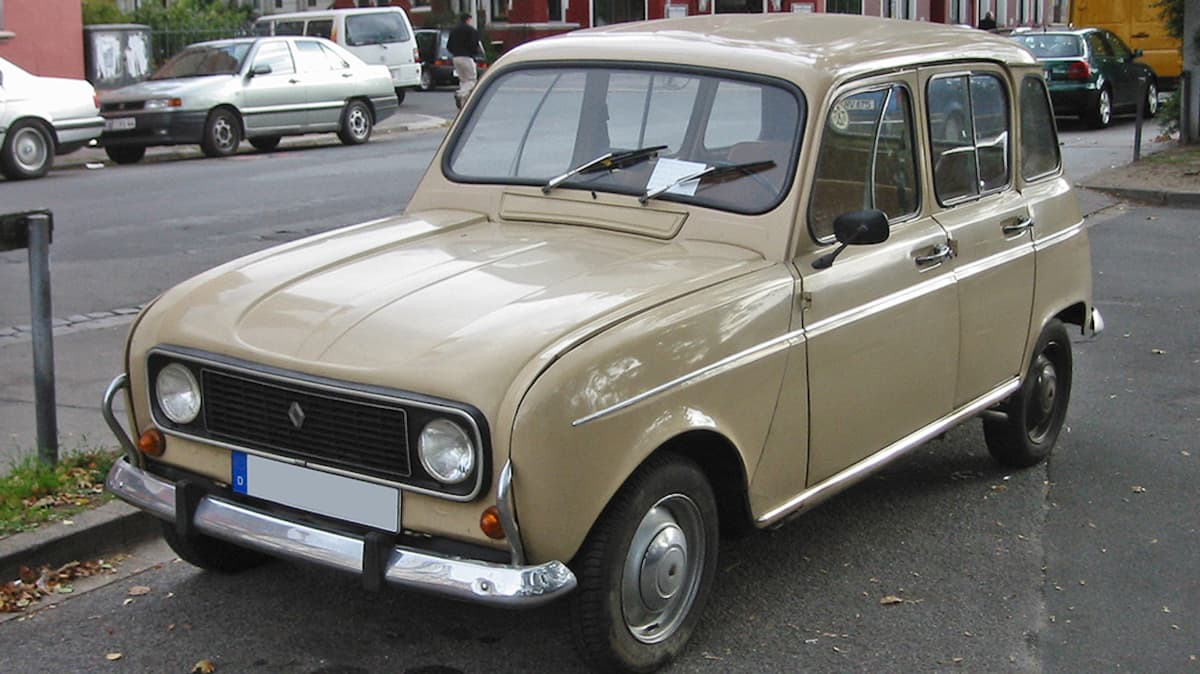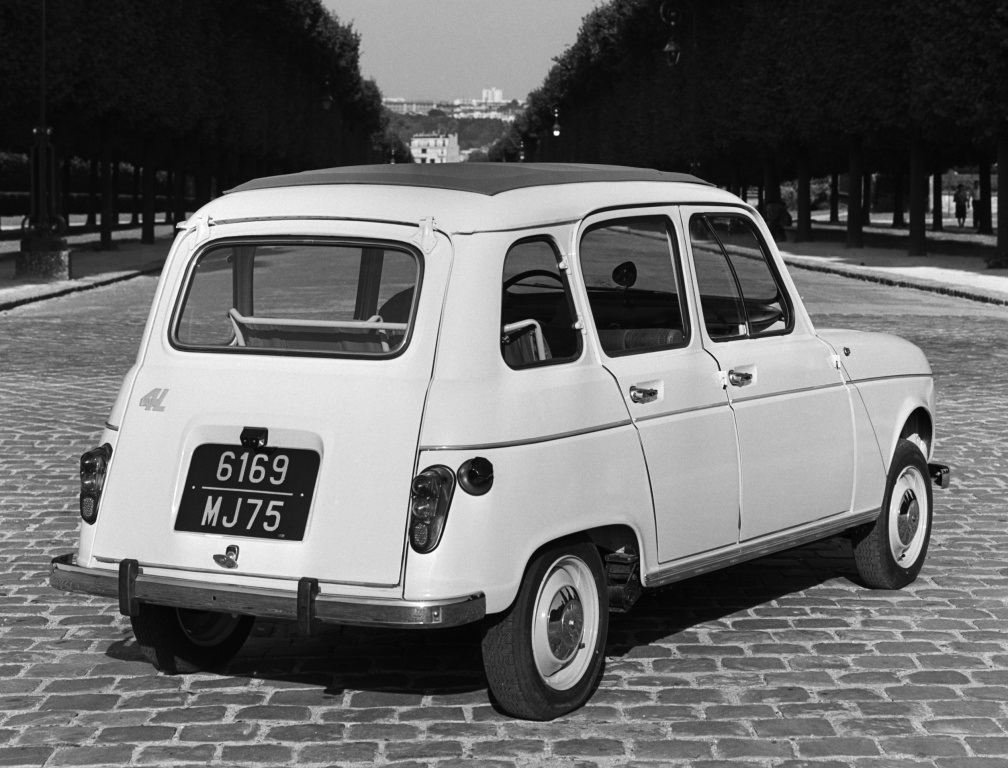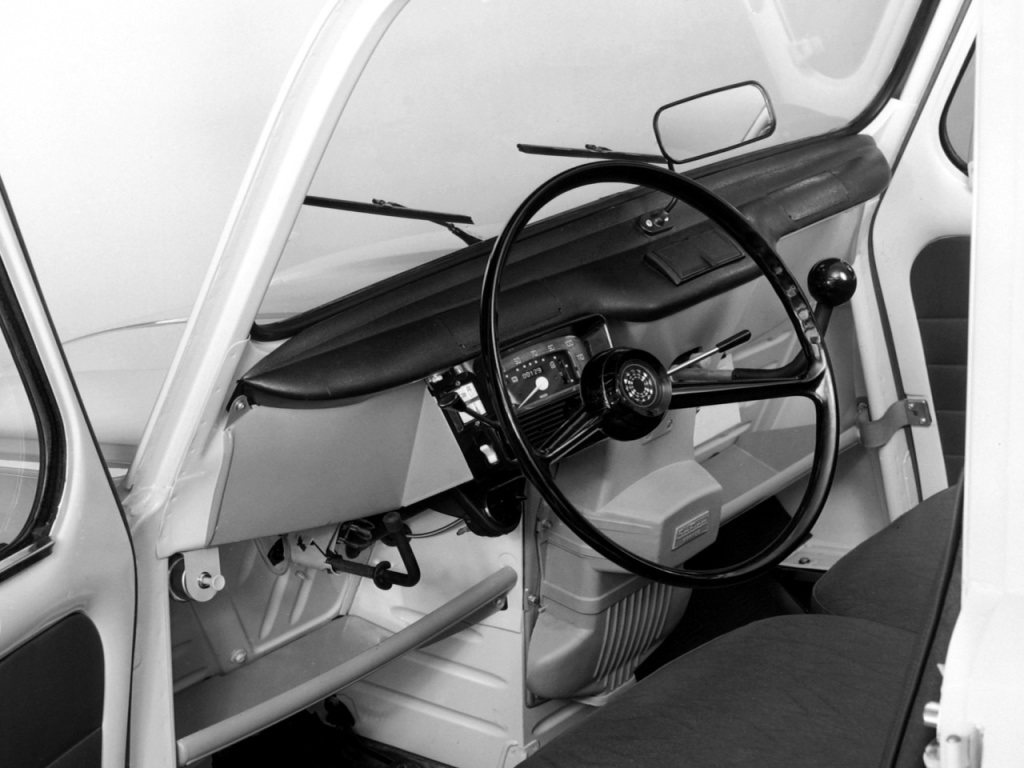
Presenting a Legend: The Revolutionary Renault 4
The Renault Quatrelle, or more commonly known to the public as the 4 or R4, never won any design awards, nor did it modernize the French automotive industry to the same extent as its rival, the Citroën 2CV “Deux Chevaux,” but it did far more for the average driver.
With a career that lasted an impressive 31 years and over eight million units sold in more than 100 countries worldwide, the “Quatrelle” launched a revolution in Europe for the so-called “baby boomers”—the generation born after World War II—paving the way for other carmakers to follow and earning its rightful place in automotive history.
The story of this car begins in 1956 when Renault sought a way to replace the popular but rather outdated 4CV model. In production since 1946, the 4CV was the first French car to reach over a million sales, but by the mid-1950s, the rapidly advancing postwar industry had rendered it obsolete. Renault’s then-boss Pierre Dreyfus believed the company needed an entirely new product to remain competitive in the market.
By then, France had changed significantly, and much of previously devastated Europe had recovered, with buyers now demanding better automobiles than those of the immediate postwar era.
Development of the Renault 4
Dreyfus gathered a team of engineers and designers and told them he wanted a car “like blue jeans.” This meant it had to be functional for a wide range of tasks yet affordable enough for most buyers to replace without major financial strain. Its owners were to include, in addition to the younger generation, families, farmers, and importantly—women.
Development progressed rapidly, although engineers and designers frequently disagreed on certain details. The biggest uncertainty surrounded the engine, which was eventually chosen as a four-cylinder, air-cooled unit with front-wheel drive. Renault produced numerous prototypes that were tested across two million kilometers under the harshest conditions—from traditional European roads to frozen Siberia and the jungles of South America—until even the smallest issues were resolved.

Design was the least contentious area, as Renault did not place much emphasis on aesthetics. Research showed that buyers valued space and driving performance over style, so these aspects were prioritized. Although small even by European standards (3.6 meters in length), the R4 was surprisingly spacious, accommodating five passengers and featuring a large tailgate for easier access to the luggage compartment. As mentioned, design wasn’t a top priority, other than needing to be enduringly appealing, much like blue jeans. The final design somewhat resembled the Renault Dauphine, but the R4 was significantly more practical.
The last remaining step was choosing a name. Early ideas included Domino and R4, before the team ultimately settled on the latter.
Renault 4 Debuts at the Paris Motor Show
The Renault R4 was officially unveiled in 1961 at the Paris Motor Show and immediately drew great attention. Attendees were introduced to a modern five-door hatchback, and as planned, Renault had something for everyone. The lineup started with the basic R4 model with a 603 cc engine producing 23 horsepower, followed by a better-equipped 747 cc version (27 hp), and finally, the “luxury” R4L with the same engine tuned to 32 horsepower. Only one gearbox was offered—a three-speed manual—delivering power to the front wheels.
Compared to previous Renault models, the R4 introduced several innovations, particularly in design and front-wheel drive. The media praised it extensively and dubbed it the “Swiss Army knife” of cars due to its ability to tackle all terrains and appeal to buyers of all ages. Although its initial price was just over five thousand euros in today’s money, Renault launched an aggressive marketing campaign to attract even buyers who could afford more expensive cars.

The campaign involved 200 vehicles driving in a convoy through many European cities. Interested potential buyers only had to wave, and the convoy would stop to give them a chance to test drive the car.
This marketing move proved very successful, and over fifteen thousand units were sold in the first month. In 1962, the range was expanded with a small van called the Fourgonette, and that same year, the R4 began its motorsport history. However, despite all efforts, the R4 finished last in the Monte Carlo Rally.
Demand continued to grow rapidly, prompting Renault to expand production beyond France and Spain to include the Republic of Ireland and Yugoslavia, to meet the annual demand of 200,000 units. As expected, most buyers were young, but the low price and ample space also attracted many farmers.
Renault saw potential for the R4 to become a fashion icon and, in 1963, introduced the La Parisienne configuration. Aimed exclusively at female drivers, this version is now among the rarest of all special models in the R4’s long history. Renault was one of the first automakers to use women in its advertising campaigns, and to demonstrate how easy the R4 was to drive in all conditions, four female drivers journeyed from the southernmost tip of South America to the U.S. state of Alaska—a stretch of over ten thousand kilometers. This proved not only the R4’s all-terrain capabilities but also its mechanical simplicity, allowing even a housewife to fix most problems.
Renault sold its millionth unit in 1967, the same year the R4 received its first design update in the form of a redesigned grille. At the same time, Renault began developing a successor, anticipating that the design would soon show its age and that buyers would demand something more modern. The Renault 6 soon followed, sharing the platform and most mechanical components with the R4, but offering more powerful engines, better build quality, and more standard and optional equipment.
Renault 4: A Sales Leader in South America
Contrary to expectations, the “Quatrelle” continued to sell well. Production was later expanded to Colombia, Mexico, and Chile to meet South American demand, where the car became a top seller. In the early 1970s, Renault also launched the Renault 5 as another potential successor to the R4, but this had no impact on the R4’s sales, which still exceeded 200,000 units annually.
In 1977, Renault sold its five-millionth unit, and a year later, it launched the first mass-produced sporty version under the GTL badge. Borrowing a 1.1-liter engine from the Renault 6, the GTL offered 33 horsepower, along with modified suspension and larger brakes. However, the GTL did not feature any design changes compared to the rest of the lineup to keep production costs low.
Renault began work on two new models (Project Z and Project X49), which were intended to replace the R4 after 1984. However, a new economic crisis in Europe once again attracted buyers looking for simple, proven cars. Still, after 1986, Renault finally ended production in the European market after 25 years with minimal changes. Production in South America ceased six years later. Several successor models were canceled due to Renault’s financial crisis, but a true replacement finally debuted in 1992 as the Renault Twingo.
It’s speculated that the R4 could have remained popular in Europe, but new safety and emissions regulations signaled a well-deserved retirement after 31 years of production and approximately eight million units sold. Even though production ended, the R4’s popularity remains high. The Renault R4 can still be seen in many films, rallies, and classic car shows—all of which began with a vision to modernize a war-torn Europe…





